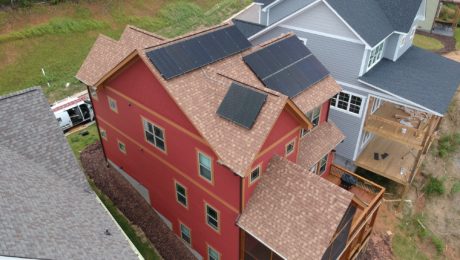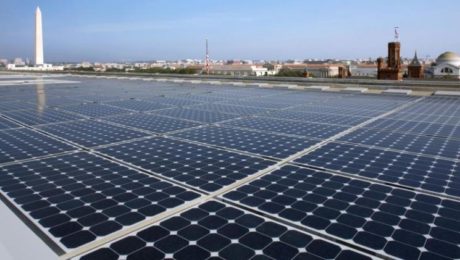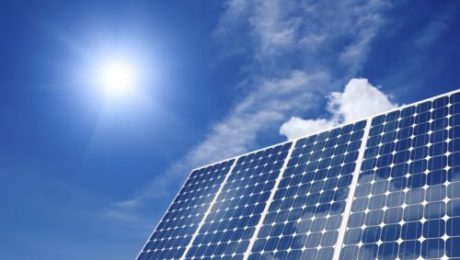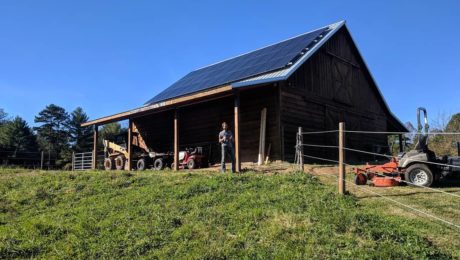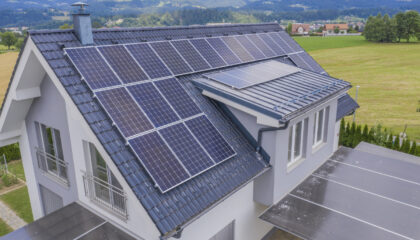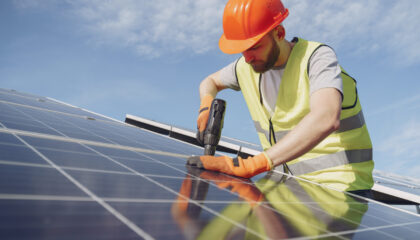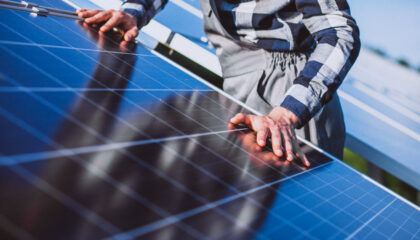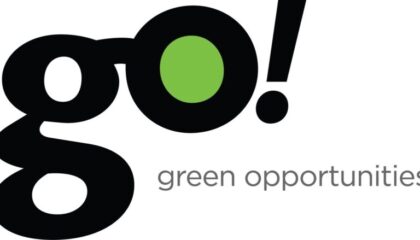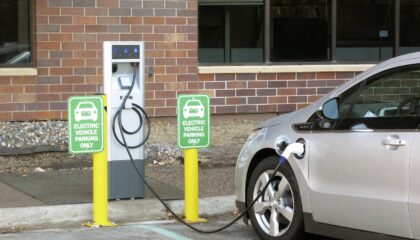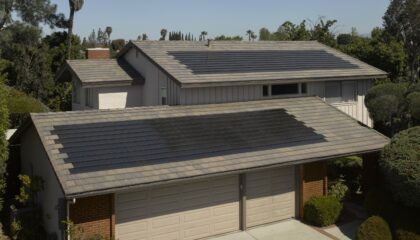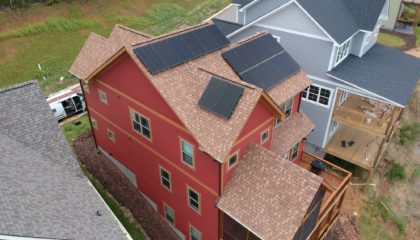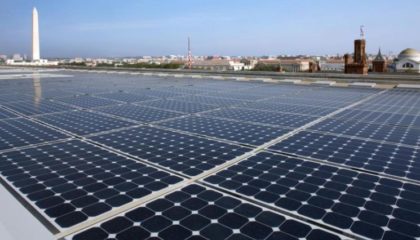IQ8 Microinverter and the all new Ensemble by Enphase
Enphase Energy’s Ensemble
Enphase’s newest and eighth generation microinverter, the IQ8, debuts with a new “grid agnostic” system. Enphase has now officially stepped into the hybrid PV system arena with energy storage under the name Ensemble. With convenient features like smart phone monitoring and virtual assistant integration with Alexa, Enphase is giving homeowners easy control and understanding of their system and its performance.
Ensemble’s AC battery provides you with energy during a grid outage, and continuous solar energy production. Solar production during an outage is crucial to recharge your battery and power loads in the home when the sun is shining. Whether you have an outage lasting hours or days, Enphase’s Ensemble is capable of powering you through.
Ensemble is expected to be released mid 2020 and will be compatible with existing IQ6 and IQ7 systems. If you have an existing installation and are interested in battery backup we’d be happy to provide you a quote.
Here’s an informative video by Enphase introducing Ensemble:
What is a microinverter?
A microinverter is a small inverter that typically connects to only one solar panel. A microinverter solar energy system will have a microinverter placed under, and connected to, each individual solar panel on your roof.
Why use a microinverter?
Microinverters offer several incentives over their string inverter counterparts: Microinverters are great at reducing the impact of shading. Should you have trees or structures casting shadows over your installation area micro’s will minimize the losses. Micro’s also operate completely independent of each other. Each solar panel then has the opportunity to reach peak performance without its neighbors bringing it down. In contrast, string inverters utilize strings of several solar panels all connected in series. When a solar panel in a strings’ performance is low it has the potential to bring down its neighbors with it; reducing the output of the whole string of solar panels.
Why use anything other than a microinverter?
Microinverters are a great option for smaller systems, say less than 10kW, where shading will be an issue and, formally, when battery backup was of no interest. On larger system installations microinverters quickly become more costly to install. There are other options to minimize shading losses, such as optimizers, when utilizing a string inverter for bigger solar energy arrays.
For more information check out other pages on our site:
How solar energy works
Solar FAQ
- Published in Solar Technology
Mammoth Fossil Fuel Subsidies
Subsidies in the form of tax credits, rebates, and other incentives for clean energy have been a major contributing factor to the growth of solar installations in recent years. Detractors of renewable energy often use the argument that renewables cannot survive without these subsidies. What these detractors are often not aware of is the staggering amount of fossil fuel subsidies spent both nationally and internationally on the fossil fuel industry. Fossil fuel subsidies keep the cost of this outdated and dirty energy source affordable to the public.
Recently the International Monetary Fund released a report with some scary findings: China and the United States are the two leading players in the world, spending well over 25% of the global GDP in 2015 on oil, gas, and coal subsidies. In the United States, we spend more money subsidizing fossil fuels than on our entire military defense budget- yes, you read that correctly. We spent over ten times the funds defending outdated fossil fuels than what was approved for education.
Besides the almost unfathomable monetary amount spent, there is also a huge toll on human lives and welfare. Another recent study shows that if fossil fuels would have been fairly priced starting in 2015, carbon emissions worldwide would be reduced by almost 30% and nearly half of human lives lost to air pollution could have been saved.
As a part of the solar and renewable energy industry, we believe government subsidies should be aligned with the welfare of all people and the progression of technology, jobs, and sustainability. The International Monetary Fund determined without fossil fuel subsidies, the global net economic gains would have been more than $1.3 trillion. The findings of these reports are shocking and we hope this information may serve as a wake up call to how important it is that we make the switch to renewable energy.
- Published in Policy
Solar Panels Increase Home Resale Value
Anyone who has lived near Asheville, NC for any amount of time has seen how competitive the real estate market has become. There are homes being built and sold every day at a premium. A recent study has shown there is an earth-friendly way to increase the resale value of your home (vs a kitchen or bath remodel) and make it more appealing to buyers amongst the myriad of other listings.
Real Estate Resale Study
A yearlong study by Zillow.com has shown that installing a Solar Energy System on your residence will increase the value by over 4%. In Asheville, the average home sale price is $284,500 which would result in raising the listing price by at least an additional $11,380. Another study by Berkeley Lab and the US Dept. of Energy found home buyers are willing to pay over $15,000 extra for a home with an already installed solar energy system. Both of these amounts are above the net cost for installing an average sized solar energy system, making the homeowner extra cash even before considering net metering savings on electric utility bills.
One of the most common worries we hear from people interested in residential solar is that they may have to sell their home or are unsure if they will move in the next few years. This should make their decision even easier! It truly is a no-brainer to make the switch to use clean and renewable energy, lower utility bills, and make money when it comes time to sell your home.
Going Solar For Less
For those interested in solar financing, SolFarm offers zero down, unsecured, penalty free (pay the loan off whenever you like) solar loans. Combining a solar loan with the Duke Energy rebate, and the Federal ITC (30% until the end of 2019! Drops to 26% January 2020.), can help you go solar for a whole lot less than you may expect. Contact us for your free quote!
Read More:
https://emp.lbl.gov/sites/default/files/lbnl-1002778.pdf
https://www.zillow.com/research/solar-panels-house-sell-more-23798/
- Published in Solar Energy, Solar News
DC’s Ambitious Clean Energy Requirement
Recently, Washington D.C.’s city council voted unanimously to require the district to use 100% renewable energy by 2032. Additionally, all public transport vehicles and privately-owned fleets will be required to be emissions free by 2045. With the threat of climate change becoming more and more prevalent, this fast-tracked plan will hopefully set a precedent across the country. Quite a few cities have already set renewable energy goals, but D.C. has by far the biggest. There are only two statewide policies, in California and Hawaii, of becoming 100% renewable energy dependent. As we see federal regulations becoming more lax, it is inspiring to see so much change at the lower levels of government.
Much of the funding for this initiative will come from large utility companies who will be making payments into the Renewable Energy Development Fund. Some D.C. residents are already paying additional rates for using natural gas and electricity, which have been funding the REDF. Part of the funding will be allocated to low-income residents, as transitioning a home to clean energy can require more of an upfront cost.
With this push for clean energy, we are pleased to see a boom in solar energy. Washington D.C. mandated that at least 10% of its energy be from the sun by 2041. On the other side of the country, California has already implemented a requirement that every new construction build to include solar panels. There have been countless smaller solar subsidies in other areas that have progressed the industry; including North and South Carolina.
Read more:
- Published in Climate Change, Policy, Solar News
Four Decades of Dropping Solar Prices Explained
Did you know the price of solar energy has dropped 99% since its major debut four decades ago?! A recent analysis by MIT researchers contributes this radical reduction in pricing to not only innovations in technology but also, and mostly, to government policy.
Solar energy, not unlike most technologies, has benefited greatly from the common contributors: research and development, private investment, and growing economy of scale. Researchers found that private investment and R&D only got the technology so far in its early years. It wasn’t until policy began stimulating market growth that solar energy really began to advance. Policy changes included renewable portfolio standards, feed-in tariffs and subsidies. With government invested in the growth of solar energy technology R&D funding followed; this funding accounted for even more reduction in costs.
Now, with a much larger economy of scale, manufacturers had the financial means to push the limits and reach for greater efficiencies from the many pieces of equipment used in solar energy systems. Solar panels themselves continue to become more energy dense; capable of capturing more energy given a smaller surface area. Inverters are nearing 100% efficiency and utility grids are adapting to make better use of distributed energy sources.
With these findings it is easy to see how policy can play a critical role in the progress of technology. Researchers feel that there is still more to come for the solar industry and see potential for continued advancements in the technology and also further reductions in costs.
To read the article in full please follow the link:
https://www.sciencedaily.com/releases/2018/11/181120073818.htm
- Published in Policy, Solar Energy
USDA Grants & Loans For Renewable Energy & Energy Efficiency
With all the recent talk about the Duke Energy solar rebate there has been little highlighting of funding available for rural businesses and agricultural producers provided by the United States Department of Agriculture. Small businesses in rural areas and many agricultural producers are eligible for guaranteed loans and unrestricted grants to help finance energy efficiency programs. To see if your business is located in a designated rural zone click here.
There are no location restrictions on agricultural producers if 50% of their gross income comes from agricultural operations.
USDA currently offers grant funding up to 25% of the total cost of a project and loans funding up to 75% of the total cost of a project. This program makes achieving energy efficiency for small and rural businesses an attainable goal. This funding may be applied not only to solar energy systems but to hydro-power, wind generation, biomass, and high efficiency HVAC systems.
The goal of this program is to increase energy supply from the private sector and provide more independence for people located further from big energy hubs. Taking large demands off the grid brings down demand and cost for everyone while also providing jobs to local alternative energy installers.
Similar to the Duke Rebate, there are deadlines to apply for these incentives. Click here for the official North Carolina USDA website for details about eligibility, deadlines, and financial statistics about these loans. The South Carolina USDA webpage can be found here.
Give us a call and we can tell you if your company qualifies for a USDA grant and/or loan for your solar energy project.
- Published in Solar Energy, Solar News



